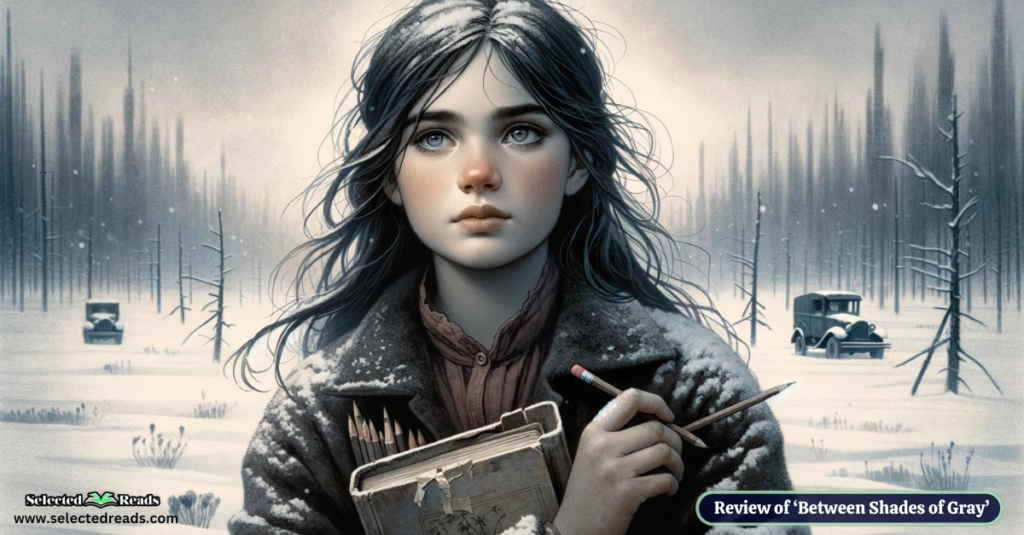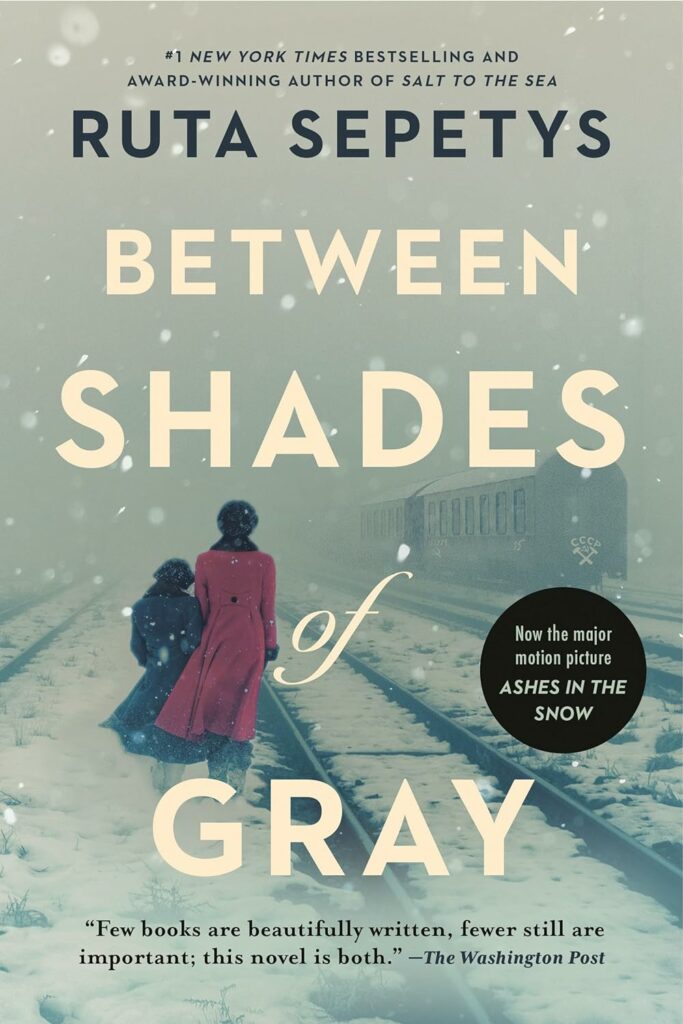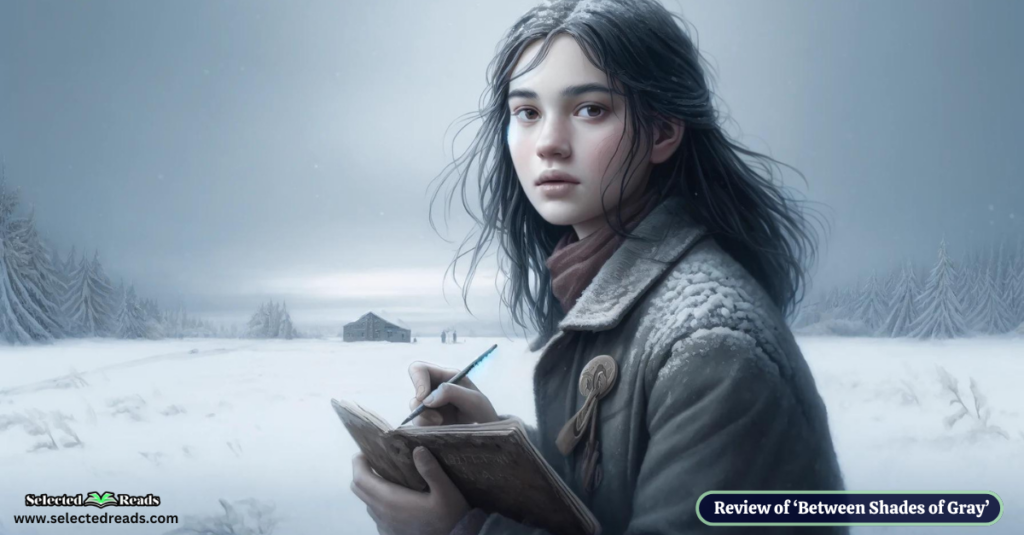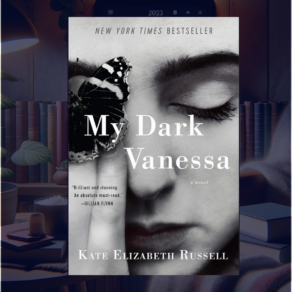For enthusiasts of historical fiction and gripping narratives, “Between Shades of Gray” by Ruta Sepetys stands out as a compelling read that highlights a poignant chapter of history. This post aims to introduce you to this powerful novel without revealing too much, preserving the unfolding of its profound story for your own reading.
Here’s how we’ll dive into Sepetys’s world: I’ll start by outlining the plot, providing a foundation for understanding the story’s context and key events. Following that, we’ll explore the main characters whose lives and struggles paint a vivid picture of resilience and hope. Finally, I will present several engaging discussion questions perfect for book club debates or personal reflection, designed to deepen your appreciation and understanding of the novel.
Between Shades of Gray Summary
“Between Shades of Gray” by Ruta Sepetys is a poignant and harrowing historical novel set during a grim period of the 20th century. It follows the story of 15-year-old Lina Vilkas, a Lithuanian girl who is forcibly uprooted from her tranquil life in 1941 when Stalin’s Soviet officers storm her home. Lina, along with her mother and younger brother Jonas, are arrested and deported under suspicion of colluding with the enemy.
The novel vividly recounts the brutal journey that Lina and her family endure aboard a crowded and filthy train car, which takes them to a forced labor camp in Siberia. Throughout the grueling transport and later during the harsh conditions at the camp, Lina clings to her passion for drawing.
Photograph: Amazon
Her sketches become both a personal solace and a vital part of her efforts to perhaps reach her father. She incorporates clues into her artwork, hoping that the drawings will be smuggled out and eventually find their way to her father, who has been sent to a prison camp.
As the narrative unfolds, Lina’s art becomes a silent witness to the atrocities and suffering faced by her and her fellow prisoners. The family battles starvation, disease, and the cruelty of their captors. Despite the relentless despair, Lina’s relationships with her mother, brother, and fellow prisoners deepen. Bonds of love and friendship are forged and tested under the most trying circumstances.
The story also weaves in a subplot of a budding romance between Lina and Andrius, a fellow prisoner. This relationship offers a tender contrast to the brutality of their surroundings and is a testament to the endurance of the human spirit in the face of desolation.
Throughout the ordeal, Lina’s hope and her determination to survive are driven by the need to reunite her family and bear witness to the history they are living through, using her art as her voice.
Related: The Personal Librarian Summary and Discussion Questions
Between Shades of Gray Characters
“Between Shades of Gray” features a cast of characters whose lives illustrate the profound impacts of political oppression and war. Here’s a detailed look at the primary and several secondary characters:
- Lina Vilkas: The protagonist, a 15-year-old Lithuanian girl, is an aspiring artist. Her narrative provides a personal and deeply emotional perspective on the events of the Soviet deportations. Lina is courageous, resourceful, and determined to keep her family’s hope alive through her drawings, which she uses to document their ordeal and send messages to her separated father.
- Elena Vilkas: Lina’s mother, Elena, stands out for her compassion, strength, and unwavering moral integrity. She acts as a pillar of support and hope for not only her children but also other prisoners. Her kindness extends to sharing whatever meager food they have and caring for the sick. Elena’s character embodies maternal love and selflessness.
- Jonas Vilkas: Lina’s younger brother, about ten years old, represents the innocence affected by the brutal circumstances. His health and well-being are one of Lina’s primary concerns throughout their ordeal. Jonas grows considerably over the course of the novel, influenced by the harsh realities he must face from such a young age.
- Andrius Arvydas: A teenage boy who becomes a significant figure in Lina’s life, Andrius helps her to sustain hope. Despite the harshness of their situation, he finds ways to support his mother and develops a strong bond with Lina. His character shows maturity and resilience, and his relationship with Lina adds a layer of tenderness and romantic love to the story.
- Kostas Vilkas: Lina’s father, whose presence in the novel is primarily through Lina’s memories and the deep longing the family feels for him. A university professor, Kostas is taken to a separate prison camp. His influence on Lina’s passion for art and her character’s strength is profound.
- Mrs. Arvydas: Andrius’s mother, who is forced into compromising situations to ensure the survival of her son. Her situation introduces complex moral dilemmas and portrays the sacrifices that individuals made to protect their loved ones.
- The Bald Man: A fellow prisoner, cynical yet realistic about their chances of survival. He often clashes with other prisoners due to his blunt outlook.
- Nikolai Kretzsky: A young Soviet guard, his interactions with Lina and her family reveal the complexities and internal conflicts faced by some of the Soviet personnel, adding nuance to the portrayal of the “enemy.”
Between Shades of Gray Discussion Questions
Here are several thought-provoking questions that can foster deep discussions about the novel:
- Survival and Sacrifice: How do the characters in “Between Shades of Gray” demonstrate resilience in the face of their dire circumstances? What sacrifices do they make to survive, and how do these sacrifices impact their relationships and moral compass?
- The Role of Art: Lina uses her art to cope with the trauma and preserve memories of her experience. Discuss how art serves as a form of resistance and remembrance in the novel. What does Lina’s ability to create under such harsh conditions say about the role of art in society?
- Ethical Dilemmas: Characters in the book are often faced with difficult choices that test their morals and ethics. Discuss some of these choices and the implications they have on the characters and their perceptions of right and wrong.
- Historical Context: The novel sheds light on a lesser-known part of history—the Soviet deportations in the Baltic States. How does learning about these events through Lina’s eyes affect your understanding of this historical period? Why is it important for such stories to be told?
- Character Development: Examine the growth of one or two characters throughout the novel. How do they change from the beginning to the end? What factors contribute to their development?
- Themes of Hope and Love: Despite the harshness and brutality of their situation, the characters in the book still experience love and maintain hope. Discuss instances where hope and love manifest in the story and analyze their importance to the characters’ survival.
- The Impact of Setting: How does the setting in “Between Shades of Gray”—from the Vilkas’ home in Lithuania to the labor camps in Siberia—affect the story’s tone and the characters’ experiences? How might the story differ if it were set in a different time and place?
- Family Dynamics: Explore how Lina’s relationship with her family members influences her actions and outlook. How do family dynamics contribute to the survival of Lina, Jonas, and Elena?
- Choices and Consequences: Discuss how the decisions made by characters like Andrius, his mother, and even the Soviet guards like Kretzsky shape their paths and the outcomes of the story. What does the novel suggest about the nature of choice under oppression?
- Literary Devices: Sepetys uses a variety of literary devices to tell her story. Identify some examples of symbolism, foreshadowing, and metaphor in the novel. How do these devices enhance the narrative and deepen the reader’s understanding of the themes?
Related: A Tale of Two Cities Summary and Characters
Final thoughts
To conclude, I trust this brief overview has sparked your interest in “Between Shades of Gray.” This novel is a profoundly moving and meticulously researched piece of historical fiction that offers a window into seldom-discussed events of the 20th century. If you haven’t yet delved into its pages, I highly recommend you do so, as it promises not only to educate but also to leave a lasting impression through its powerful storytelling and unforgettable characters.









